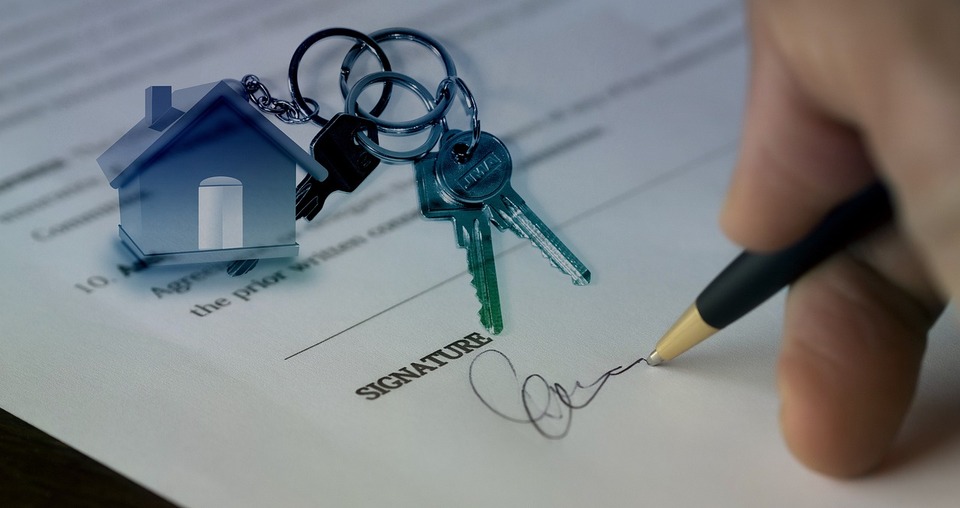Fillable Form 4797
This form is used by the business owners to report the sale, exchange or disposition of a particular property that was used in trade or business. A detailed description of qualifying properties is listed in the instructions for the form.
Fill and sign 4797 online and download in PDF.
What is Form 4797?
Form 4797, Sales of Business Property, is a form used by taxpayers in the United States to report gains or losses from the sale or exchange of business property and other capital assets. This form is essential for those who have disposed of property used in a trade or business, property held for the production of income, and certain involuntary conversions.
Accurate reporting on Tax Form 4797 is critical for several reasons. For example, ensures that taxpayers comply with federal tax laws and avoid potential audits or penalties from the Internal Revenue Service (IRS). Moreover, it provides a clear financial picture of the taxpayer's business activities, aiding in better financial planning and decision-making. Taxpayers should keep detailed records of all business property transactions and consult with tax professionals to navigate the complexities of Form 4797 effectively.
How do I fill out Form 4797?
Get a copy of 4797 template in PDF format.
A fillable copy of Form 4797 can be found here.
Name Shown on Return
Enter your name as shown on your tax return.
Identifying Number
Enter the identifying number associated with your return.
Gross Proceeds
Enter the following information in the spaces provided.
- Gross Proceeds
- Amount of Gross Proceeds from sales or exchanges reported to you for 2021 for Form(s) 1099-B or 1099-S that you are including on Line 2, 10, or 20.
- Total amount of gain that you are including on Lines 2, 10, or 20.
- Total amount of loss that you are including on Lines 2 and 10
Part I - Sales or Exchanges of Property Used in a Trade or Business and Involuntary Conversions From Other Than Casualty or Theft - Most Property Held More Than 1 Year
Enter the relevant values for each of the following:
- Table
- Description of property
- Date acquired
- Date sold
- Gross sales price
- Depreciation allowed or allowable since acquisition
- Cost or other basis, plus improvements and expense of sale
- Gain or loss
- Gain, if any, from Form 4684, Line 39
- Section 1231 gain from installment sales from Form 6252, Line 26 or 37
- Section 1231 gain or loss from like-kind exchanges from Form 8824
- Gain, if any, from Line 32, from other than casualty or theft
- Combine Lines 2 through 6, then enter the gain or loss in the space provided and on the appropriate lines as indicated.
- Nonrecaptured net section 1231 losses from prior years
- Subtract Line 8 from Line 7. If the difference is zero or less, enter 0. If the amount entered here is 0, enter the gain from Line 7 on Line 12. If it is more than zero, enter the amount on Line 8 on Line 12 below and enter the amount from Line 9 as a long-term capital gain on the Schedule D filed with your return.
Part II - Ordinary Gains and Losses
Enter the relevant amounts for each of the following:
- Enter in the table provided all ordinary gains and losses not included on lines 11 through 16, and including property held 1 year or less.
- Loss, if any, from Line 7
- Gain, if any, from Line 7, or amount from Line 8 if applicable
- Gain, if any, from Line 31
- Net gain or loss from Form 4684, Lines 31 and 38a
- Ordinary gain from installment sales from Form 6252, Line 25 or 36
- Ordinary gain or loss from like-kind exchanges from Form 8824
- Combine Lines 10 through 16
- For all non-individual returns, enter the amount from Line 17 on the appropriate line of your return and skip a and b below. For individual returns, fill out Lines 18a and 18b below.
- If loss on Line 11 includes a loss from Form 4684, Line 35, column (b)(ii), enter that part of the loss here. Enter the loss from income-producing property on Schedule A, Line 16.
- Redetermine the gain or loss on Line 17 excluding the loss, if any, on Line 18a.
Part III - Gain from Disposition of Property Under Sections 1245, 1250, 1252, 1254, and 1255
Enter the following information and amounts for each of the following:
- 1245, 1250, 1252, 1254, and 1255 property
- Description of property
- Date acquired
- Date sold
For Properties A through D in the table on Line 19, enter the following information:
- Gross sales price
- Cost or other basis plus expense of sale
- Depreciation or depletion allowed or allowable
- Adjusted basis. Subtract Line 22 from Line 21
- Total gain. Subtract Line 23 from Line 20
- If section 1245 property:
- Depreciation allowed or allowable from Line 22
- Enter the smaller value between Line 24 and Line 25a
- If section 1250 property, enter 0 on Line 26g if straight line depreciation was used
- Additional depreciation after 1975
- Applicable percentage multiplied by the smaller value between Line 24 and Line 26a
- Subtract Line 26a from Line 24. If residential rental property OR Line 24 are not greater than Line 26a, skip Lines 26d and 26e.
- Additional depreciation after 1969 and before 1976
- Enter the smaller value between Line 26c and Line 26d
- Section 291 amount
- Add Lines 26b, 26e, and 26f
- If section 1252 property: skip this section if you did not dispose of farmland or if this form is being completed for a partnership
- Soil, water, and land clearing expenses
- Line 27a multiplied by applicable percentage
- Enter the smaller value between Line 24 and Line 27b
- If section 1254 property:
- Intangible drilling and development costs, expenditures for development of mines and other natural deposits, mining exploration costs, and depletion
- Enter the smaller value between Line 24 and Line 28a
- If section 1255 property:
- Applicable percentage of payments excluded from income under section 126
- Enter the smaller value between Line 24 and Line 29a
Summary of Part III Gains
Enter the relevant values for each of the following:
- Total gains for all properties. Add property columns A through D, Line 24
- Add property columns A through D, Lines 25b, 26g, 27c, 28b, and 29b. Enter the sum here and on Line 13
- Subtract Line 31 from Line 30. Enter the portion from casualty or theft on Form 4684, Line 33. Enter the portion from other than casualty or theft on Form 4797, Line 6
Part IV - Recapture Amounts Under Sections 179 and 280F(b)(2) When Business Use Drops to 50% or Less
Enter the amounts for (a) Section 179 and (b) Section 280F(b)(2) for each of the following:
- Section 179 expense deduction or depreciation allowable in prior years
- Recomputed depreciation
- Recapture amount. Subtract Line 34 from Line 33.
Start filling out a 4797 sample and export in PDF.
Frequently Asked Questions (FAQs)
What types of property are reported on Form 4797?
Form 4797 is used to report sales of real estate, machinery, equipment, and other property used in a trade or business. It also includes depreciable and amortizable property.
How is the adjusted basis of a property calculated?
The adjusted basis is the original purchase price of the property plus any improvements made, minus any depreciation taken. This calculation is crucial for determining the gain or loss on the sale.
What is recapture of depreciation?
Depreciation recapture occurs when a gain on the sale of depreciable property is taxed as ordinary income up to the amount of depreciation previously taken. It applies to property covered under sections 1245 and 1250.
What are involuntary conversions, and how are they reported on Form 4797?
Involuntary conversions occur when property is destroyed, stolen, or condemned, and the proceeds are used to replace the property. These transactions are reported in Part II of Form 4797.
Can individuals file Form 4797 electronically?
Yes, individuals can file Form 4797 electronically using tax preparation software or through a tax professional. Electronic filing is often faster and reduces errors.
What is the deadline for filing Form 4797?
Form 4797 must be filed with the taxpayer's annual tax return, typically by April 15th of the year following the tax year in which the property was sold. Extensions may be available if needed.
How do capital gains and losses differ from ordinary gains and losses on Form 4797?
Capital gains and losses are typically from the sale of investment property, while ordinary gains and losses arise from the sale of business property. Form 4797 helps distinguish between these types for accurate tax reporting.
What records should be kept to support entries on Form 4797?
Taxpayers should keep detailed records of purchase prices, improvements, depreciation schedules, and sale details of the business property. These records substantiate the reported gains or losses.
How does section 1231 property affect Form 4797?
Section 1231 property includes depreciable business property held for more than one year. Gains from such property are treated as capital gains, while losses are treated as ordinary losses.
What happens if there is a net gain on Form 4797?
A net gain on Form 4797 is typically reported as income on the taxpayer's tax return. It may be subject to capital gains tax rates or ordinary income tax rates, depending on the nature of the gain.
How are losses reported on Form 4797 treated for tax purposes?
Losses reported on Form 4797 can offset other income, reducing the taxpayer's overall tax liability. They are usually treated as ordinary losses.
What is the purpose of IRS Publication 544?
IRS Publication 544 provides guidance on how to report sales and other dispositions of assets, including those reported on Form 4797. It helps taxpayers understand the rules and requirements.
Can a loss on Form 4797 be carried forward?
Yes, a loss on Form 4797 can often be carried forward to future tax years if it exceeds the taxpayer's current-year income. This helps in reducing future tax liabilities.
What role do depreciation schedules play in Form 4797 reporting?
Depreciation schedules provide a record of the depreciation taken on business property, which is necessary for calculating the adjusted basis and any depreciation recapture. Accurate schedules are crucial for proper reporting.
What is a section 179 expense deduction, and how does it impact Form 4797?
Section 179 allows taxpayers to deduct the full cost of certain business property in the year it is placed in service, rather than depreciating it over time. This deduction affects the property's adjusted basis and depreciation recapture on Form 4797.
Create a 4797 document, e-sign, and download as PDF.
Keywords: form 4797 4797 form irs form 4797 4797 irs form form 4797 irs tax form 4797 sales of business property form form 4797 online form 4797 pdf irs form 4797 online irs form 4797 pdf


















